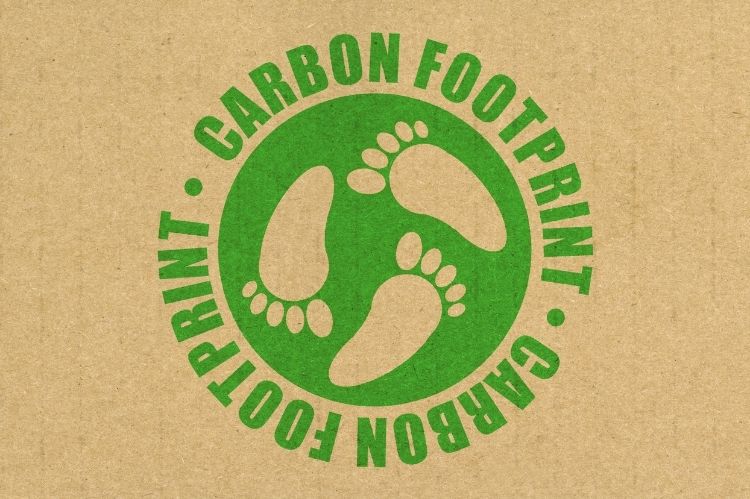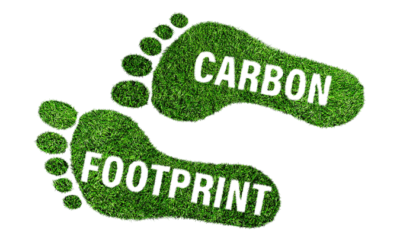Carbon Footprint in Business
Whilst researching the article on sustainability we realised that of the three pillars of sustainability; environmental, economic and social, the subject of environmental sustainability and carbon footprint reporting is a very broad topic, and we have therefore expanded upon this.
Saving the planet is important to us all. This article summarises why a reduction in our carbon emissions is necessary and how we are going to achieve it. For further ideas on reducing your own emissions please see our article Reducing your Carbon Footprint.
Why environmental sustainability in business is important
Environmental sustainability is fundamental to the survival of our planet and ourselves. Polluted land, air and water severely affects our quality of life and the ability of local communities and the larger society to thrive. Following this, there is a knock on affect on the existence of many species of plants and animals.
By the middle of this century the world must reduce emissions to as close to zero as possible. With the small amount of remaining emissions absorbed through natural carbon sinks like forests and new technologies such as carbon capture. If we can achieve this, global emissions of greenhouse gases will be ‘net-zero’ and we can avoid reaching climatic tipping points like the melting of arctic permafrost, releasing millennia of stored greenhouse gases and losing control of our climate for good.
Businesses can become part of the solution by cutting down on pollution and waste and contributing to the cultivation of a liveable planet. Businesses can make a major impact and account for 60% of emissions cuts by 2030, as per the Paris Agreement.
We must all do our part to ensure that business operations can be carried out without negatively impacting the environment, community or society as a whole.
Indeed, the goal of a sustainable business strategy is to make a positive impact. A wide array of environmental, economic, and social factors is considered when making business decisions, and operational impact is monitored to ensure that short-term profits don’t turn into long-term liabilities. Sustainable business strategies are unique to each organisation as they tie into larger business goals and organisational values, but the end goal is always the same: Do well by doing good.
What is a carbon footprint?
A definition of a carbon footprint is “the best estimated measure of the full climate change impact of something.” (Mike Berners-Lee) We know that any carbon footprint measurement, no matter how detailed the calculations, will not be 100% correct but will be the best estimation. We also know that nobody is going to have a perfect carbon footprint, but everybody can strive to reach a climate positive lifestyle.
Your carbon footprint, whether as an individual or a business, is a calculation of the total greenhouse gas (GHG) emissions caused by your activities. These may be incurred either directly or indirectly, through activities such as burning fossil fuels for travel and transportation, clearing forests for urban and agricultural use, transforming coal, oil and gas into electricity. GHG emissions are made up from the energy you use for electricity and transport, as well as the energy required to produce your food and things that you buy. These are called ‘direct emissions’, however the full carbon footprint of something would take into account all of the ‘indirect’ emissions also, such as the extraction and processing of fossil fuels used in manufacture and transport. This makes the true footprint much harder to measure.
The most common greenhouse gas released by the burning of fossil fuels is carbon dioxide CO2 but there are many other GHGs that contribute to global warming that need to be considered. Our carbon footprint is calculated in terms of CO2e, carbon dioxide equivalent, meaning the total climate change impact expressed in terms of the amount of carbon dioxide that would have the same impact.
Our Reduction Strategy
In 2020 AMS IAC started to measure our carbon footprint. We established our financial year 2018-2019 as our baseline year as this is when we moved our manufacturing enterprise from Dorset to Cornwall. With the help of Conscious Creatives we calculated our carbon footprint for this period and offset the calculated emissions.
Since then we have collated two further years’ worth of data and created an Impact Report that shows a steady decline in emissions over the period. Some of this decline can be attributed to the effects of Covid19, but additional actions have been taken to continue the reduction of our carbon footprint, such as increasing recycling, reducing travel, introducing flexible working so that commuters can time their journey around the rush hour, extending home working and hybrid working, reducing paper usage etc.
The impact report sets out our ambitious plans to generate further reductions over the next few years and ensure that we can move forward with environmentally sustainable processes.
These plans include:
- In house production of small components, reducing deliveries and monitoring and keeping to a minimum the machining waste
- Increasing our on-site renewable energy
- Reducing the number of company vehicles in operation and ensuring that any new vehicles are electric or hybrid
- Changing our sales methods to reduce travelling to the minimum
- Changing our waste and recycling supplier to one that weighs the waste then targeting ways of reducing this
- Monitoring and understanding our water usage and exploring opportunities for reduction
At the end of each year we will offset our carbon footprint by investing in environmental projects. We will offset double the amount of carbon calculated as both the carbon footprint calculations and offsetting can be inaccurate and we want to account for all the direct and indirect emissions that we are responsible for on our way to net-zero.
Carbon Offsetting and Net-Zero
Carbon offset schemes allow individuals and companies to invest in environmental projects around the world to balance out their own carbon footprints. The projects are usually based in developing countries and most commonly are designed to reduce future emissions. This might involve rolling out clean energy technologies or purchasing and ripping up carbon credits from an emissions trading scheme. Other schemes work by soaking up CO2 directly from the air through the planting of trees.
Reducing your carbon footprint through offsets is problematic though. This is where understanding the difference between net-zero and carbon neutral become important. Carbon neutral companies have offset 100% of their emissions through these carbon credits or tree planting schemes. It does not commit them to reducing their emissions and the offsets don’t align in terms of timing. Planting a tree now will take 25 years before it is able to take the amount of carbon in your reporting window to be removed from the atmosphere.
This is why we are aiming to be net-zero and not simply settling for carbon neutral.
To achieve net-zero we can only offset 10% of our baseline year emissions; we must achieve a 90% reduction. As detailed on our Impact Report our baseline year emissions were 37.38CO2e, so this means that our footprint must be no higher than 3.7tCO2e by 2030. A very challenging task.
Environmental engineering and sustainability
As an instrumentation and control company much of our product range is designed to prevent water pollution and minimise wastage of water, fuel and other commodities.
In addition to this we are trialling new materials: For example, the floats for our water drain valves, currently created from solid polypropylene, can be 3D printed from recycled plastic bottles sourced locally; re-using a material already in existence and helping to keep the beaches and countryside clean from plastic waste. To receive updates on this and other projects please sign up to our newsletter.
Stay up to date with our monthly newsletter
Check out our latest blog articles below…
Impact Report 2023
Impact Report 2023
Heritage Conservation Project
Crib Hut Heritage Conservation ProjectThe team at AMS Instrumentation & Control Ltd all have the option to take a week’s additional paid leave to do charity work if required, so when the opportunity arose to volunteer with the Cornwall Heritage Trust to conserve...
How to reduce your carbon footprint
Following on from our Carbon Footprint article we have put together some ideas on how you can reduce your carbon emissions. A company is made up of a range of individual stakeholders who can cut their carbon footprint via their respective positions within the company...



